As usual, these white papers derive from an inquiry. This time was no different except the question came from a scientist at the National Physical Laboratory of England. He introduced himself; I’m a physicist working in optical frequency metrology and found the DS75CLHV to be suitable for precision adjustment of laser mirror mounts for application in remote/automated beam alignment.
And especially piquing my interest, he shared a CAD rendering of the proposed rig for steering lasers!

Background
Let me fill in the picture, our Bureau of Standards was founded by Congress in 1901, when McKinley was President. Now the NIST (National Institute of Standards and Technology), they're America's physical sciences laboratory. However, England's equivalent is NPL, the National Physical Laboratory. And their standards lab is a bit older!
Established when Victoria was Queen, heck, they even have a tree sharing DNA with Newton's infamous apple tree! And while the public's familiarity is typically with the museum and the occasional open house, the facts are notable researchers include Wallis (dam buster bombs using Lancasters during WWII) and similarly, Alan Turing, of Enigma Machine fame! In fact, the grandson of Charles Darwin himself was once the director of NPL - the mind boggles!
Other NPL research luminaries include Watson-Watt, the inventor of RADAR (back in 1935). Radar, of course, allowed Spitfires and Hurricanes to climb to the attack against the Luftwaffe crossing to bomb London! What's more, NPL was also home to the world's first atomic clock, which allowed the very definition of the second to be accurately established.
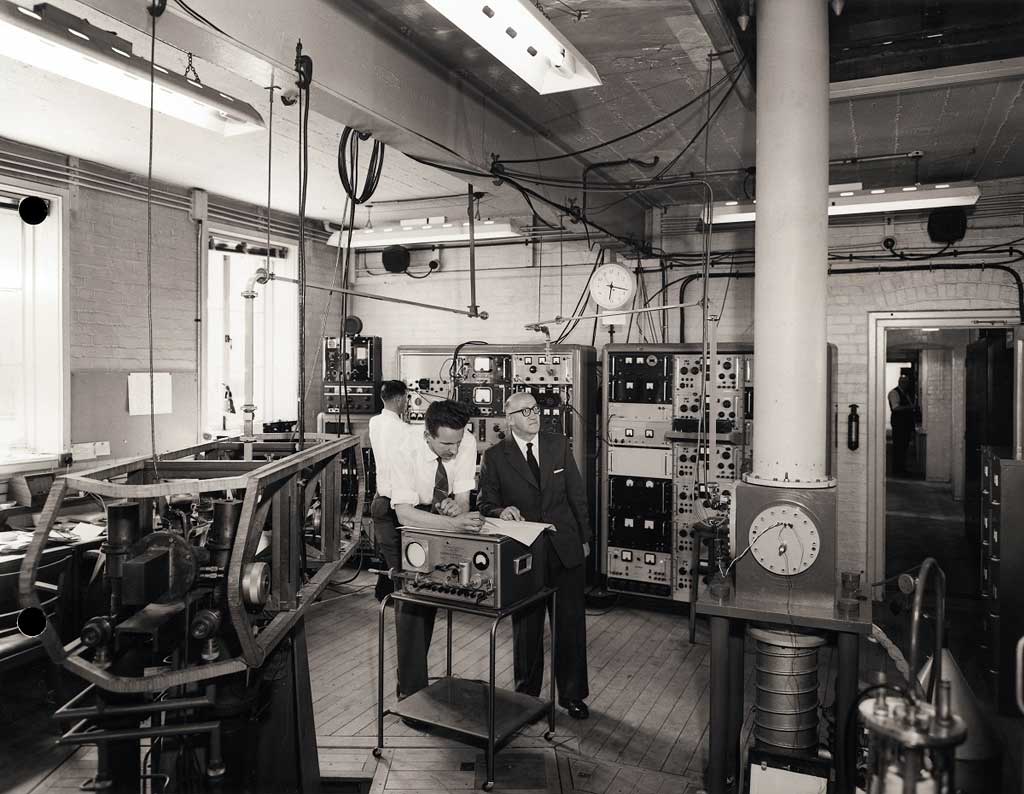
So to be honest, because our usual B2B inquires come from the likes of the US Navy, or the Army, plus NGOs, and universities, to say he had my attention would be an understatement. Steering lasers!
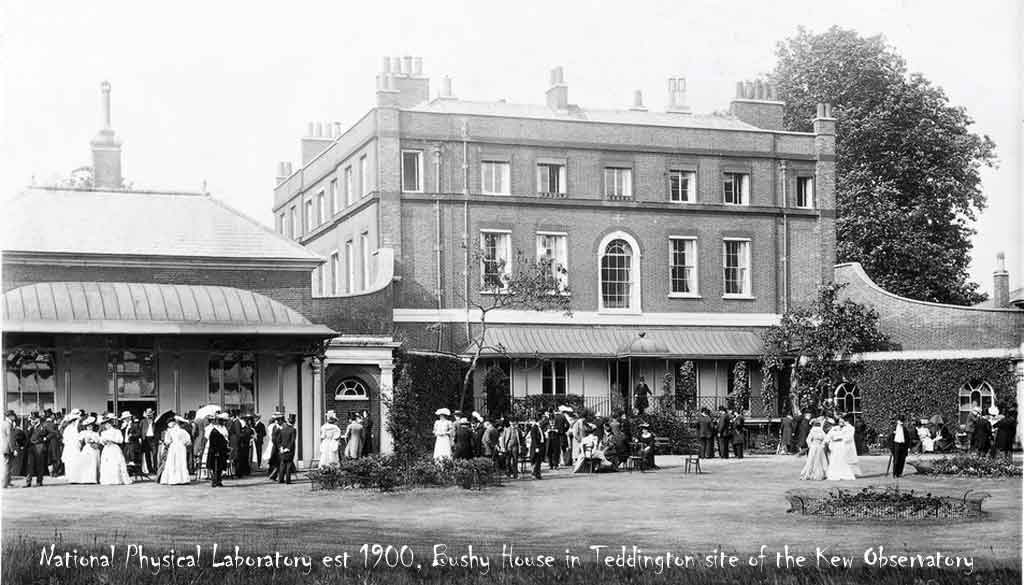
What's in it for me?
Or why should I care? Simple, it's because physical labs are into physics (duh). But I mean fundamental physics. Basic research. Science for science's sake - and industry. Like these guys are charged with artificial intelligence, communications, cybersecurity, quantum computing - they are the geek's geeks, take my meaning? We (ProModeler and me, personally) were flattered because like modelers everywhere, we're geeks, too.
At heart our source of pride is because NPL have judged the very same DS75CLHV and DS105CLHV you may be using for a 48" Extreme Flight Extra or an SCX24, as suitable to accurately steer laser beams! Bit more critical than a rudder, eh? Lasers? Think Star Trek? George Jetson? Oh yeah!
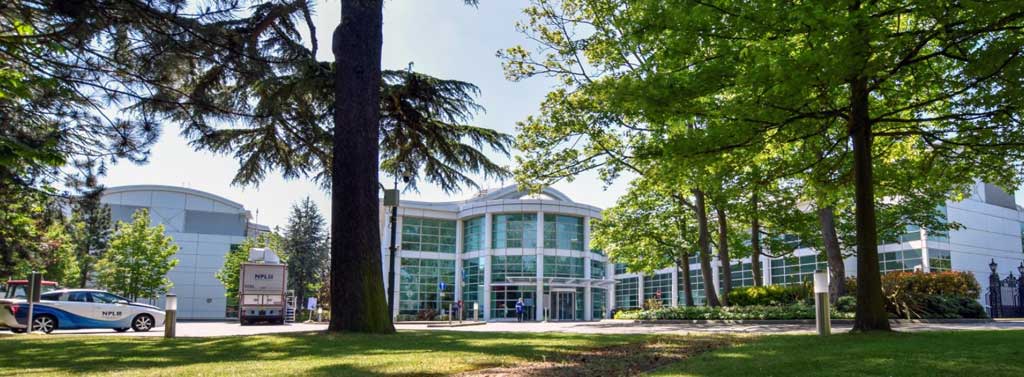
- Modern quarters, Teddington in South London
Because it's an iterative process
So one thing led to another, and what was just an idea in a CAD workstation (electrons plus photons of light), became hardware. Primitive hardware to be sure but nevertheless tangible. Meaning aluminum optical breadboards from Thorlabs, optical drive products like kinematic vertical drive optical mounts from standa - and of course - ProModeler servos!
Add mirrors, linkages, infrared beams, PWM control loops . . . all things modelers would find strange (but somehow familiar and absolutely not beyond their inquisitive ken). And now it's something to touch and more important, to be used for testing. Empirical results, you grok?
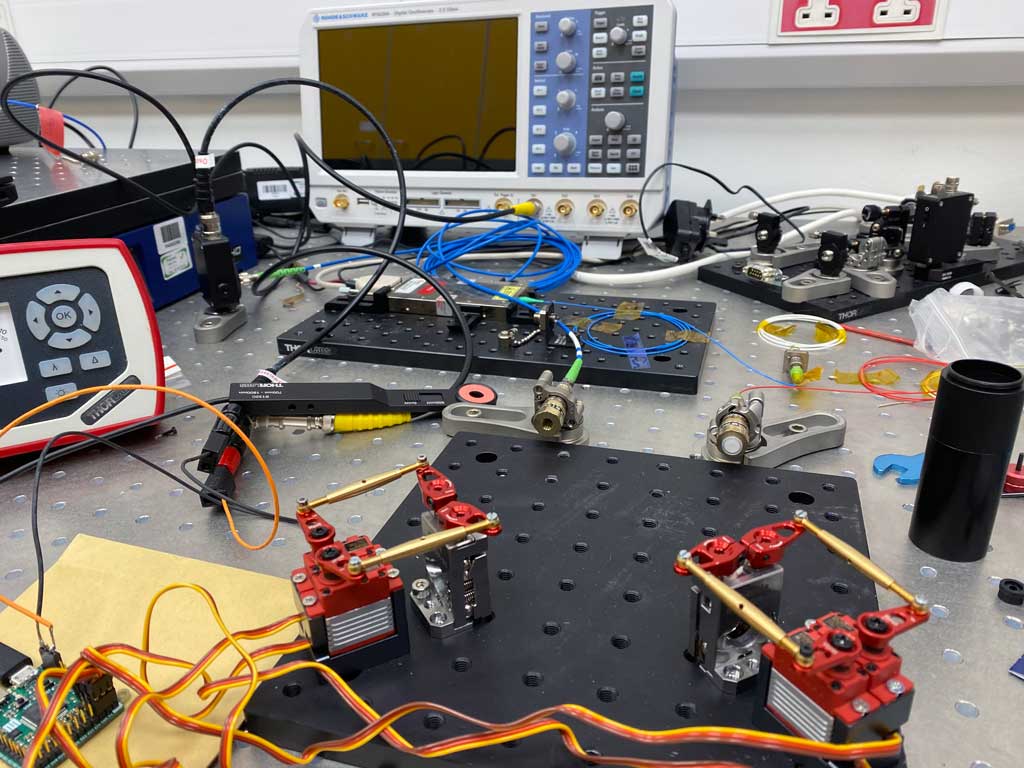
- From CAD render to prototype, the V1 test rig using infrared beams to test the servos
So the above photo is of the initial rig used to test ProModeler servos. Infrared light comes out of one of the gold tubes, gets bounced around by the two silver mirror stands and into the other gold tube. Determining how accurately light can be steered toward the target (measured by the oscilloscope in the background) as it's adjusting the mirrors automatically using ProModeler servos (plus a microcontroller board) was the goal.
Would ProModeler servos cut the mustard?
The answer was a resounding yes. And their language validated our approach, which is to make and use the best component parts on the planet. Not a cost be damned approach but one where cost is not our principal focus.
Honestly? Their apprehensions regarding the issues of delving into the Asian market (with attendant poor quality) spoke volumes. What's more, we hear the same from other B2B customers. We also hear the same from our B2C customers, e.g. the more astute modelers amongst you!
Note; what's important in all this is NPL decades ago transitioned from a government agency staffed with civil servants to what it is now, private. Ably guided by a direct successor of Darwin, (CEO Peter Thompson), a key part of their mission is managing costs through implementing the sophisticated use of COTS hardware (COTS = Commercial
Off The Shelf).
In this, they are just like our own military's use of COTS because they too share the idea of maximizing their dollars (or more accurately regarding NPL, Pound Sterling). Meaning through suitable commercial products.
Thus, they reached out to us. In our case, due to things like MIL-STDS, which puts us on a different level when it comes to attracting interest as a reliable partner. Same holds for experienced modelers, too.
Part of what makes the ProModeler servos better than our east Asian competitors is that unlike hobby-grade servos, they're built to meet military standards (and subjected to these tests).
MIL-STD-810G-Part 16
- Shock - Test Method 516.6
- Vibration - Test Method 514.6
- Rain - Test Method 514.5
In part, this is due to the requirements of our primary customer. However, because we're modelers and have knocked a servo off a workbench, experienced crashes, and know a thing or two about engine vibration (plus how a summer afternoon pop-up rain shower may drench a model before landing), it means these tests are important for civilian users as well.
Savvy modelers? They totally get how potting compound on the PCBs for vibration resistance translates into more reliable servos for their models. Similarly, top modelers, even those who aren't trained engineers and physicists viscerally understand how insert molding bronze hardpoints means maintaining gear mesh for prolonged service life.
Ditto the high value of CNC-machining the center section from a solid billet of 6061-T6 aircraft aluminum instead of relying on injection molded plastic. This, being done expressly so the motor pressed into the case sheds heat more efficiently.
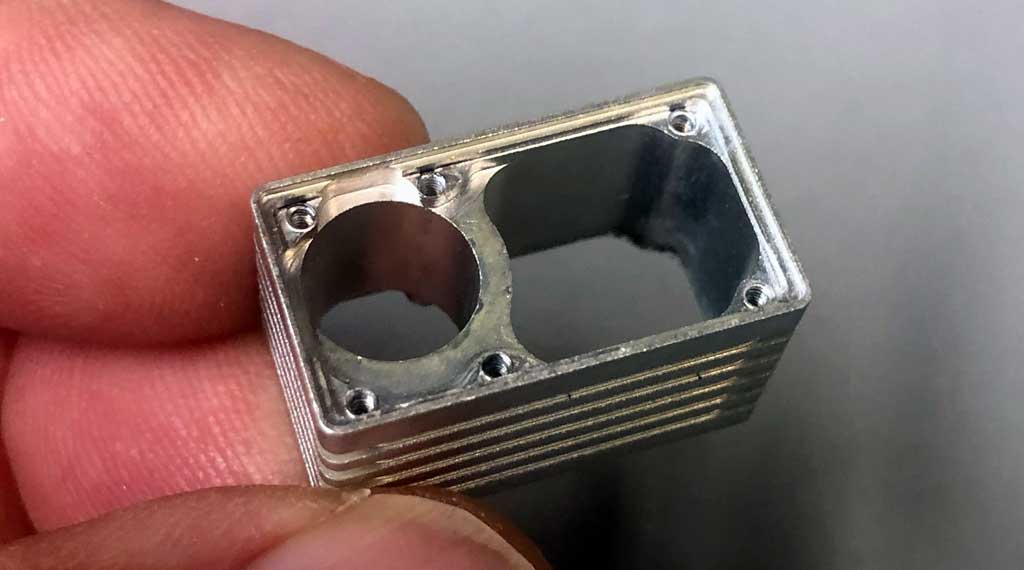
- Precision machining is called for when parts get this small
And like modelers appreciate our using the best potentiometer money can buy means performing crisp maneuvers, one which begin and end as they're supposed to . . . every time, then as it turns out, it's the same thing with standards labs, too. The staff scientists? They totally get what ProModeler is about!
So what's next? Well, their subsequent prototype - call it the V2 - nailed down the fact the ProModeler DS105CLHV sub-micro servo were up to the job.
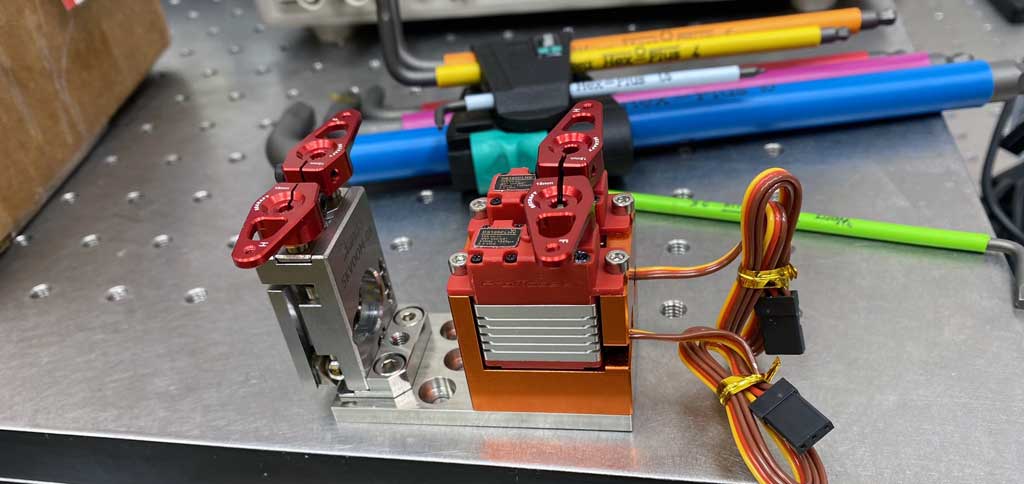
- Mounted to a Thorlabs base plate, plus standa optical mounts, but DS105CLHV is the hero!
A win through empirical tests
Proof we're on the right track is we've subsequently shipped them hundreds of servos. And if you've wondered whether these tiny ProModeler servos are suitable for your own project? The answer to, 'What's in it for me?' is this; considering now you know how suitable they've proven to be for precise optical steering of laser beams, then we'd hazard to say . . . yes, these are great servos for your next project!
Click this link to learn more about our DS105CLHV submicro servos and it'll conveniently open in another browser tab so you don't lose your place.
Oh, and we're standing by for an update because we've been promised more photos!